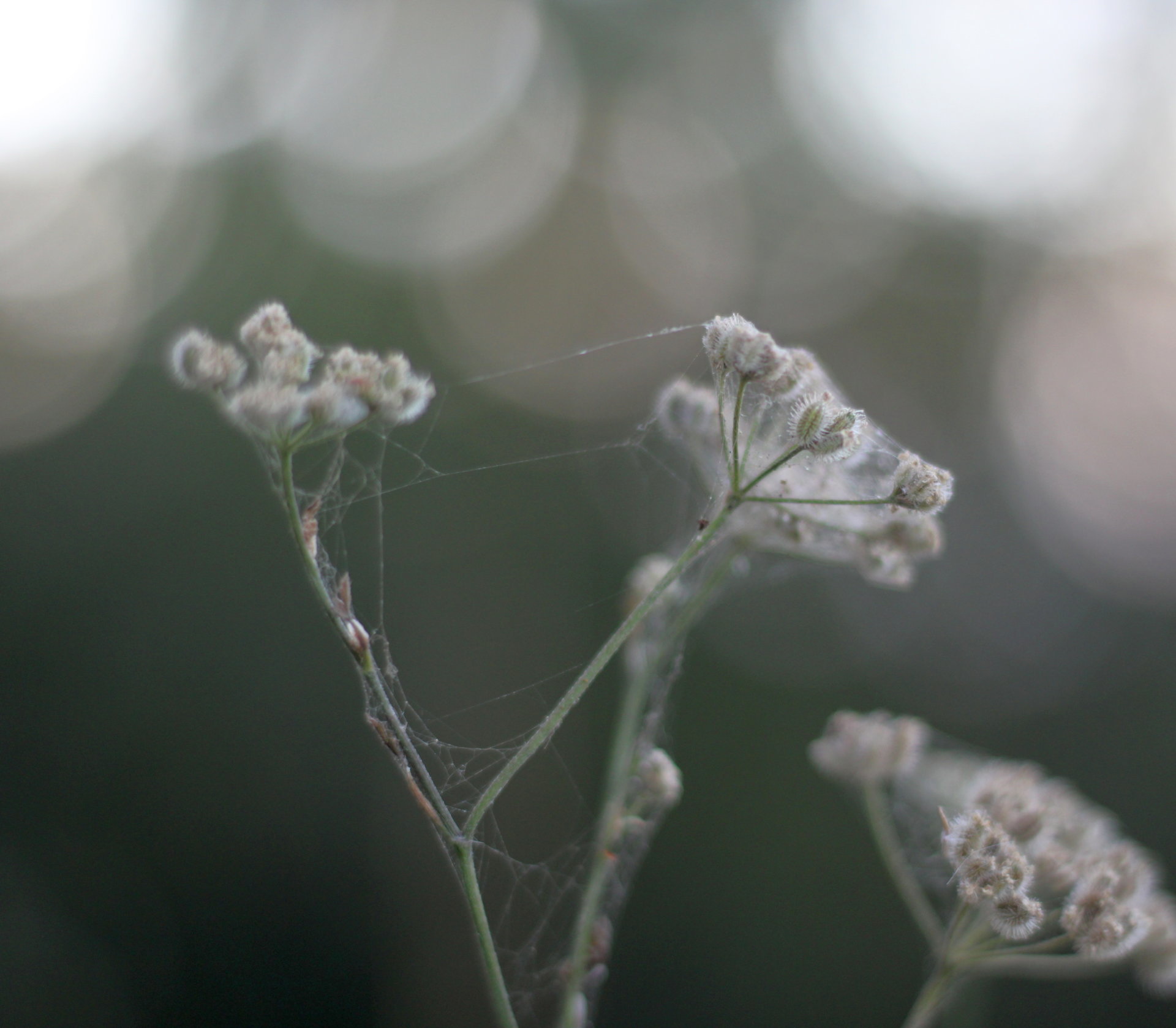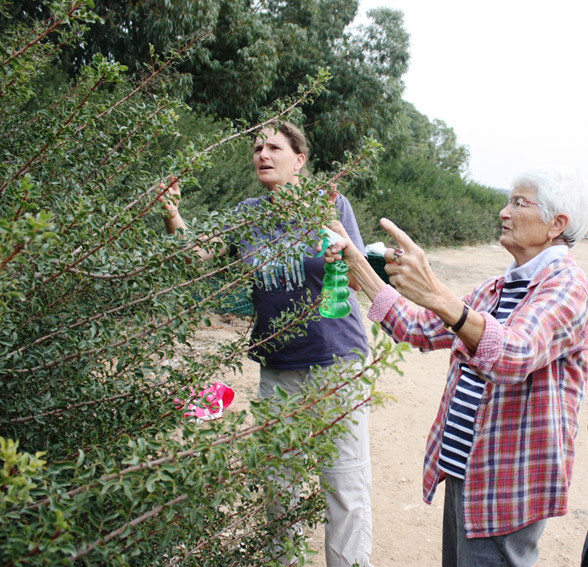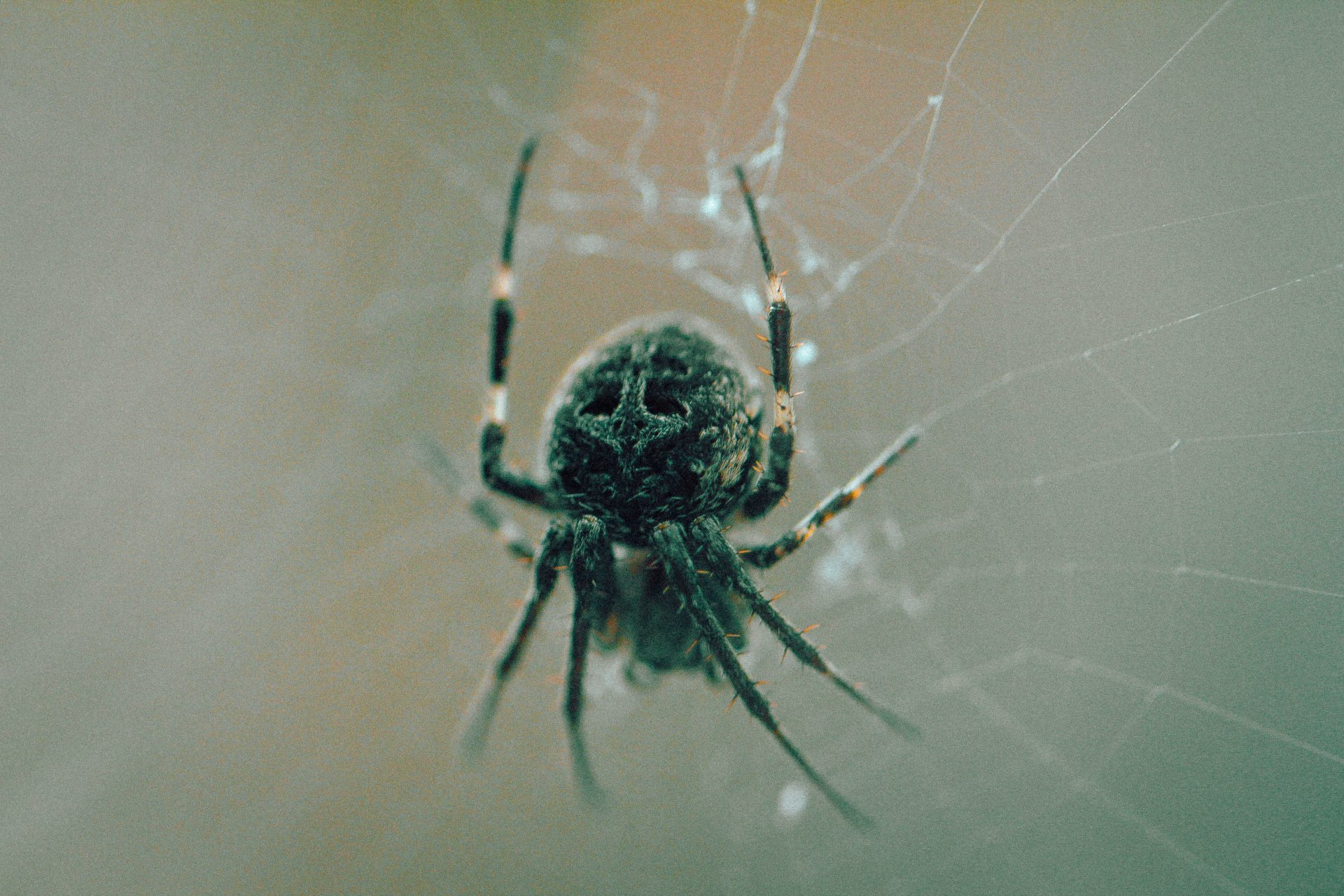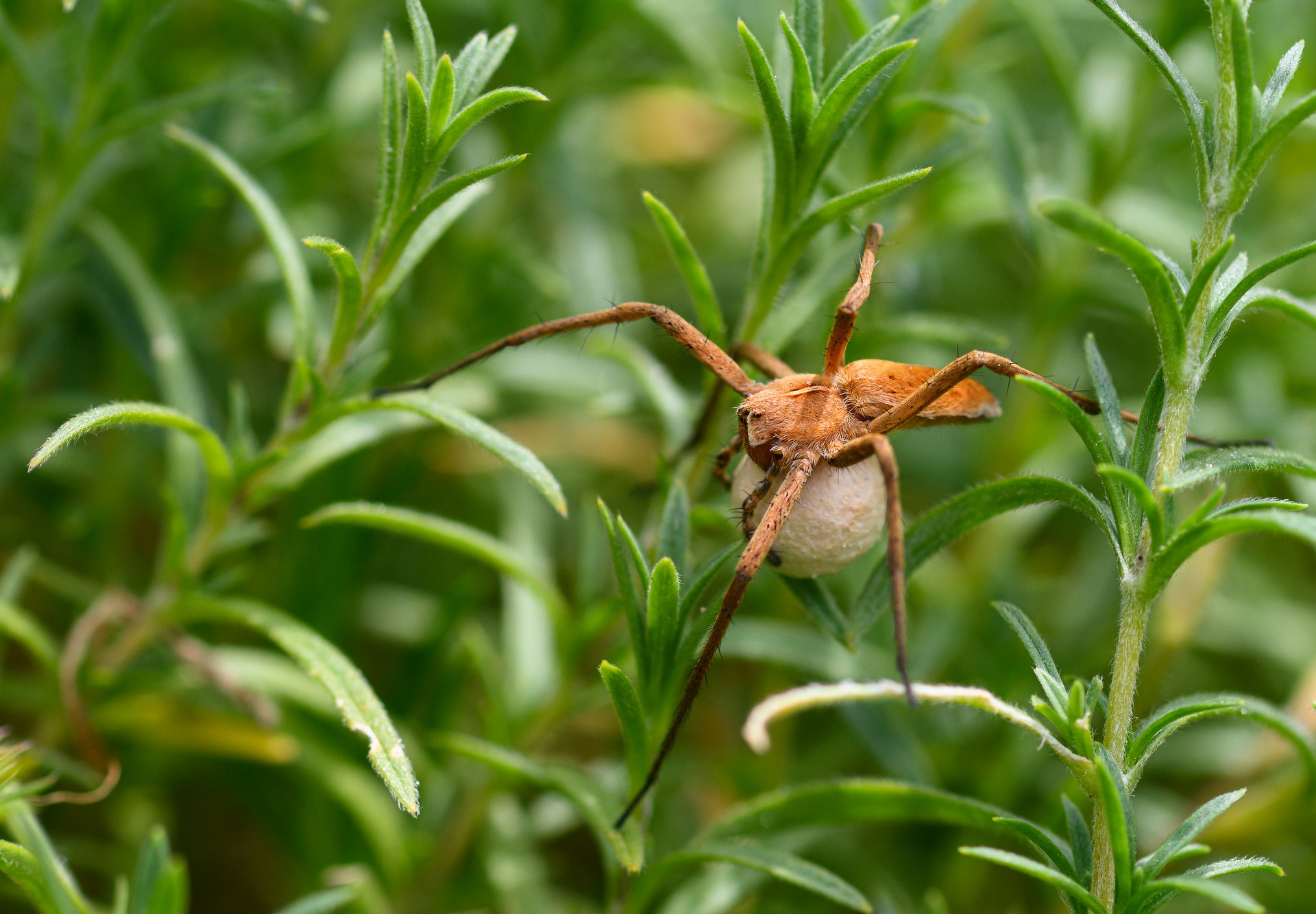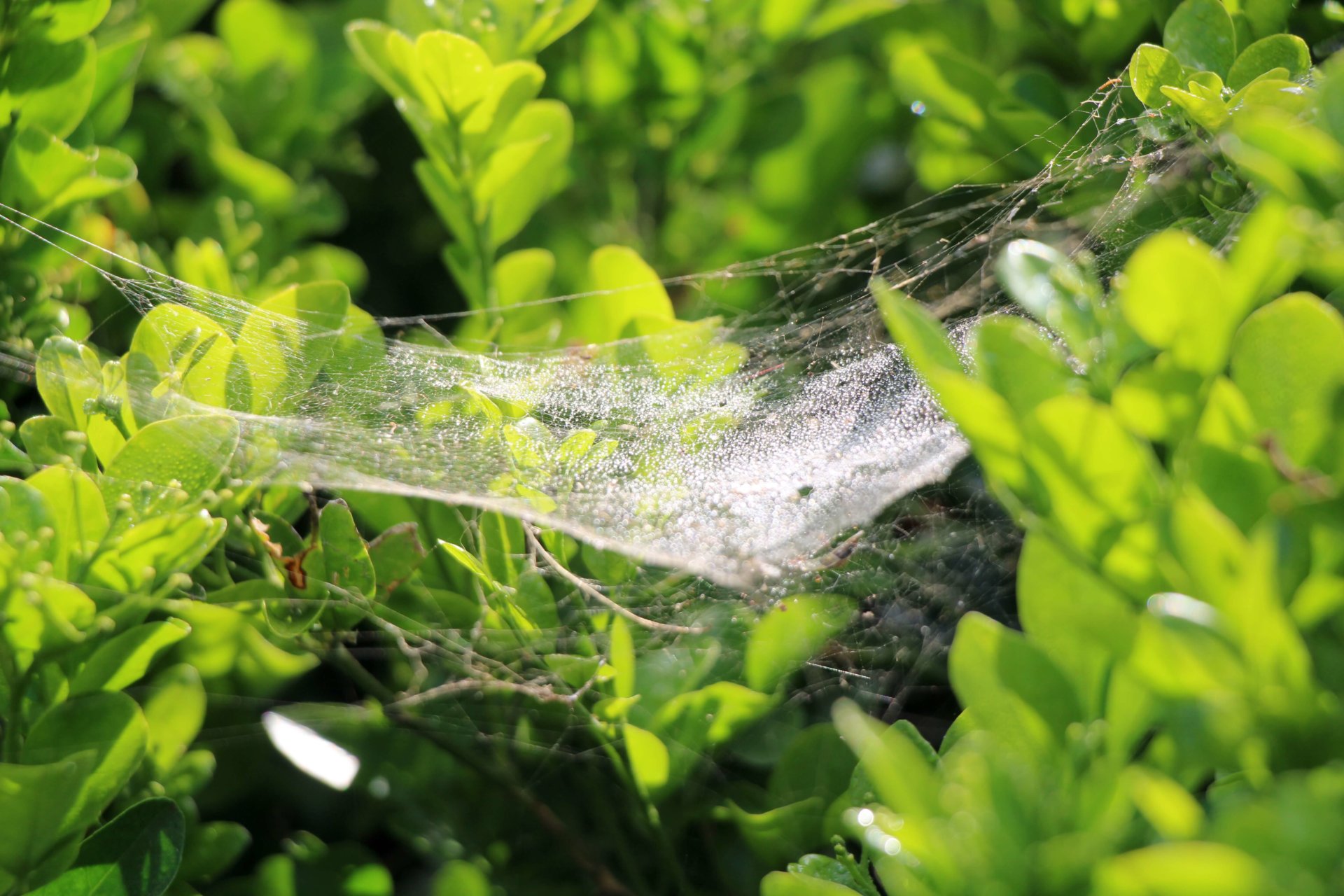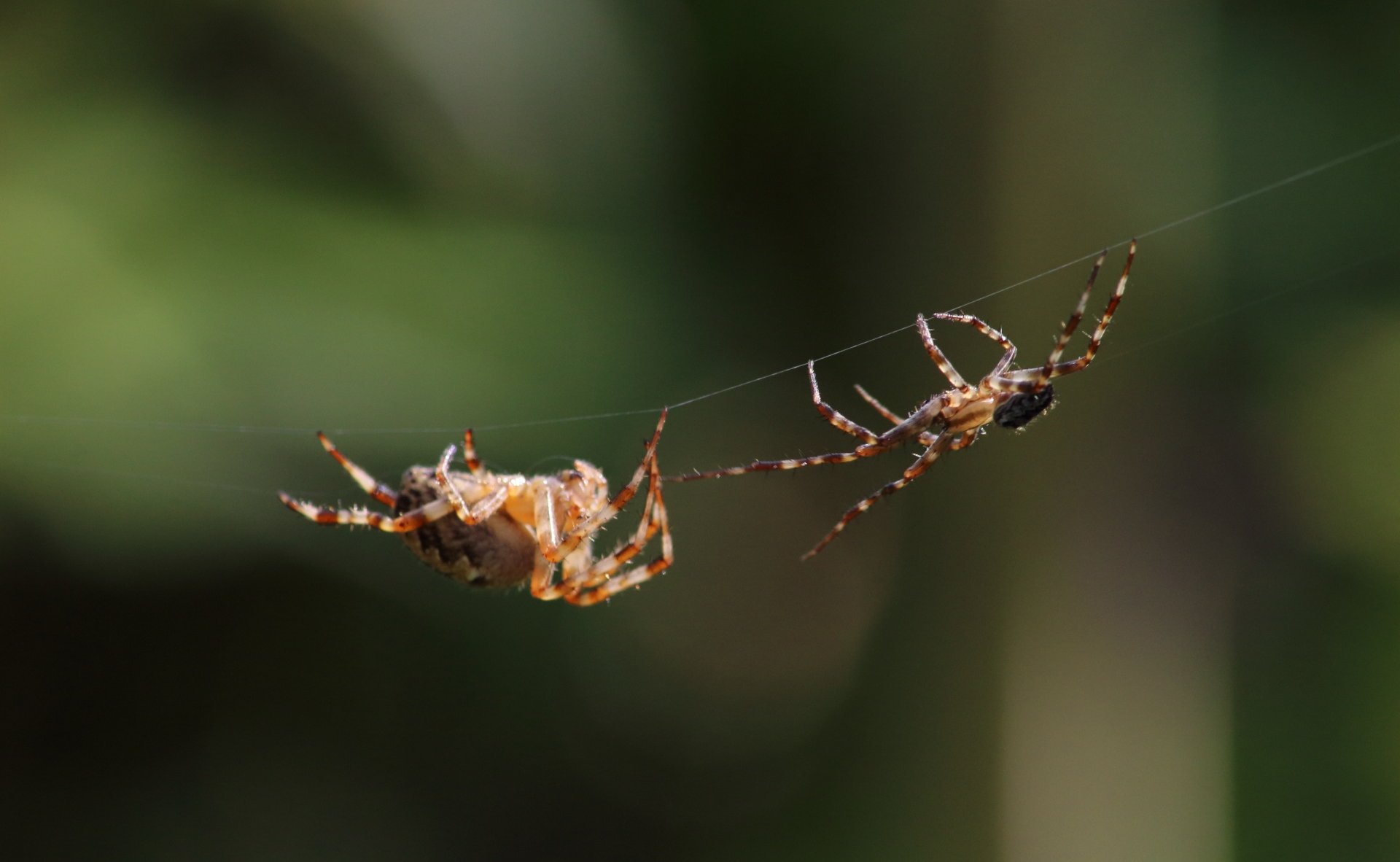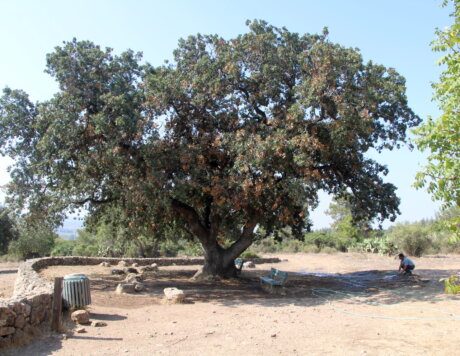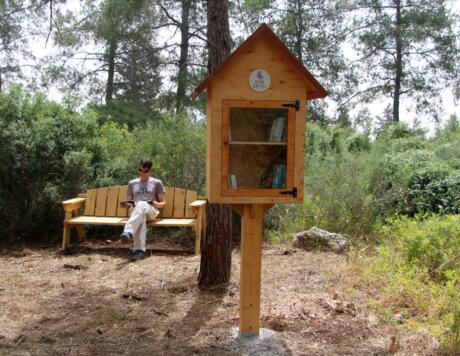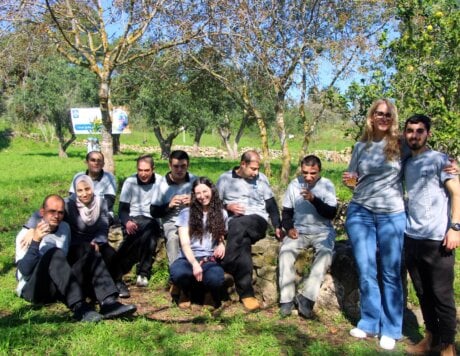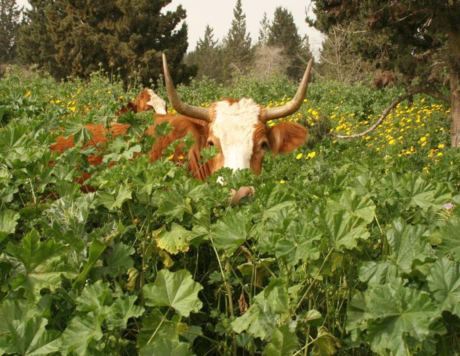After teaching in a Field School as her army service, she started studying at Hebrew University and later on at the Technion. Years later, with a master’s degree in the field of cancer research and a doctorate in developmental genetics Assaf decided to leave everything and return to her childhood love, nature and spiders specifically. Her post doc was already written while at the spiders’ lab of professor Yael Lubin at Ben Gurion University. Today she lives in Kibbutz Maagan Michael and teaches in Seminar Hakibutzim and oversees Forest Education in the Education department in Ramat Hanadiv.
Fear is an acquired trait
How do folks respond when you tell them what you do? After all, Arachnophobia is one of the most common phobias among humans. The Theory of Biophilia by Wilson , responds Assaf, teaches that children are born with a love for nature therefore it seems fear of animals is a gained fear, most commonly due to lack of knowledge. Assaf teaches about her encounters with students and their parents as well as educators. During some of these encounters, as soon as the animals would be exposed the mothers would clutch their children close to them. That speaks for itself. For a moment I felt awkward because I immediately saw myself among these mothers and realized how many anxieties we pass on to our children. So in the following lines we collated some interesting facts about this fabulous animal which may help change the way you think of and treat them next time you encounter one on your doorstep!


